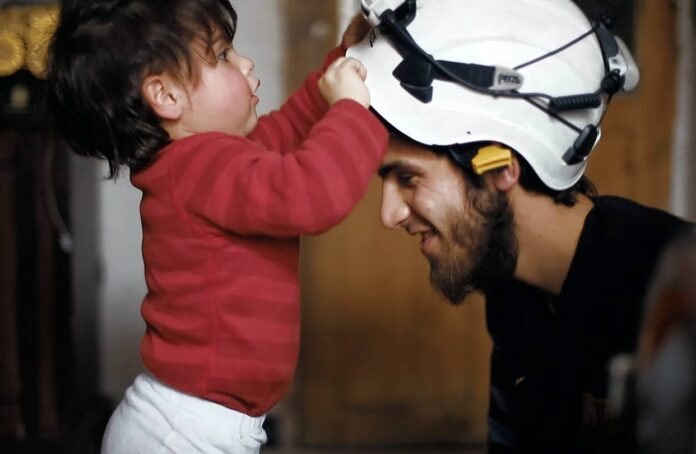Could Ordinary Syrians Defy a War’s Brutality?
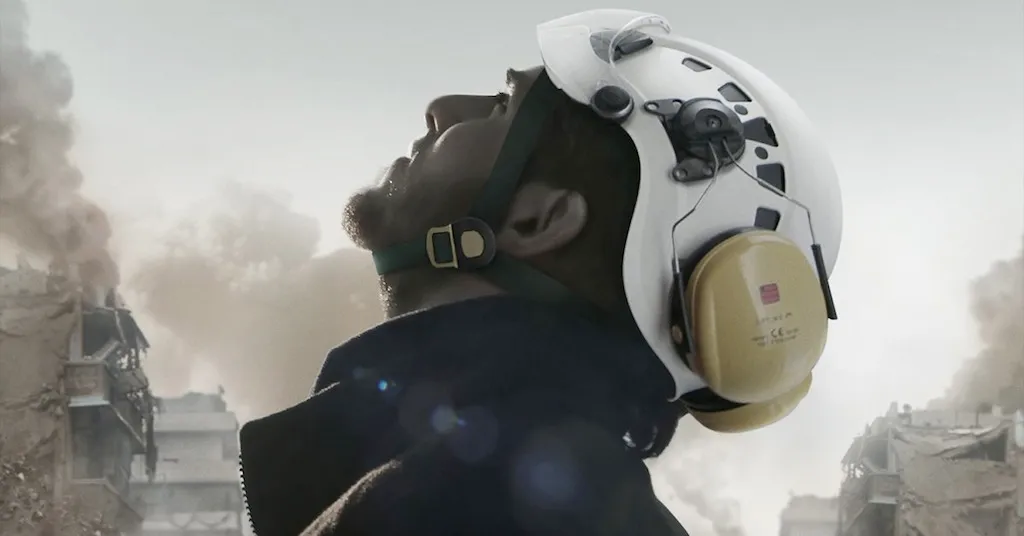
March 2013, Aleppo, Syria
What drives ordinary people—tailors, teachers, pharmacists—to rush toward exploding bombs when others flee? In Syria’s war-torn cities, where airstrikes and barrel bombs turned homes into rubble, a group of unarmed volunteers known as the White Helmets emerged as beacons of hope. These civilians, risking death to save strangers, became global symbols of resilience. But could they survive the relentless violence of Syria’s civil war and the propaganda that branded them enemies?
Volunteers Rise Amid Escalating Violence
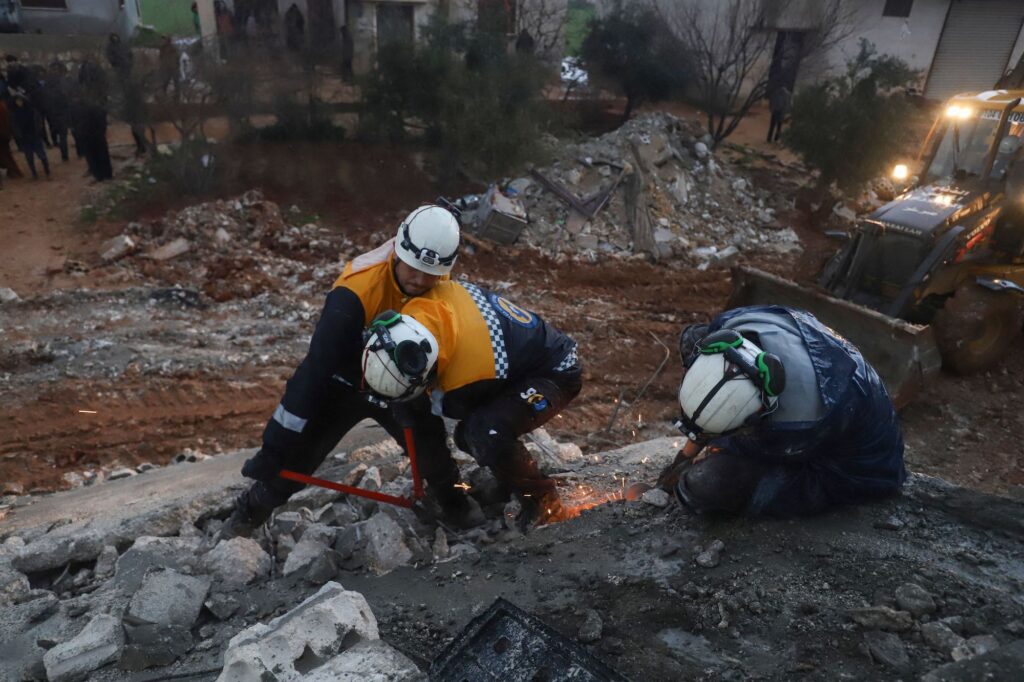
By late 2012, Syria’s civil war, sparked by 2011 protests against President Bashar al-Assad, had escalated into a brutal conflict. In opposition-held areas like Aleppo and Idlib, government forces unleashed airstrikes and barrel bombs—crude explosives dropped from helicopters—targeting civilian neighborhoods. With no formal emergency services, local volunteers began rescuing people trapped under collapsed buildings. In early 2013, these efforts formalized into the Syria Civil Defence (SCD), or White Helmets, founded with support from former British Army officer James Le Mesurier and Syrian Raed al-Saleh, a former electronics trader. Trained by Turkey’s AKUT Search and Rescue Association and funded by Western governments, the group grew to 3,000 volunteers by 2014, operating in rebel-held zones. Their motto, drawn from the Quran, was: “To save one life is to save all of humanity.”
Facing Airstrikes and “Double-Tap” Attacks
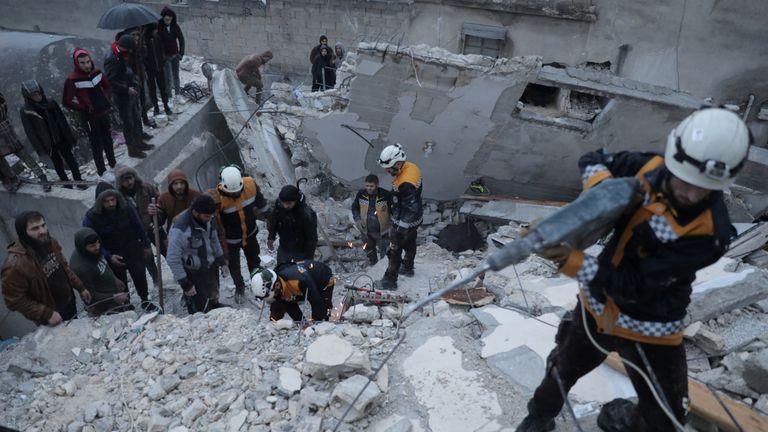
The White Helmets’ work was perilous. In Aleppo, a city battered by siege and bombardment, volunteers like Khaled Omar Harrah ran toward smoking ruins after airstrikes. On October 10, 2014, in Aleppo, Harrah led a 16-hour rescue after a barrel bomb flattened a residential building. Digging through concrete, he heard a faint cry and found a 10-day-old baby, Mahmud Ibildi, alive under the rubble—a “miracle baby” whose rescue video went viral. “Every time I hear a baby’s voice, I think I’m delusional,” Harrah told Vocativ, describing the moment. But the regime’s “double-tap” strikes—second bombs targeting rescuers—made their work deadly. Harrah himself was killed in an Aleppo airstrike on August 11, 2016, one of 308 volunteers lost by 2025, many in such attacks.
Propaganda and Persecution Intensify
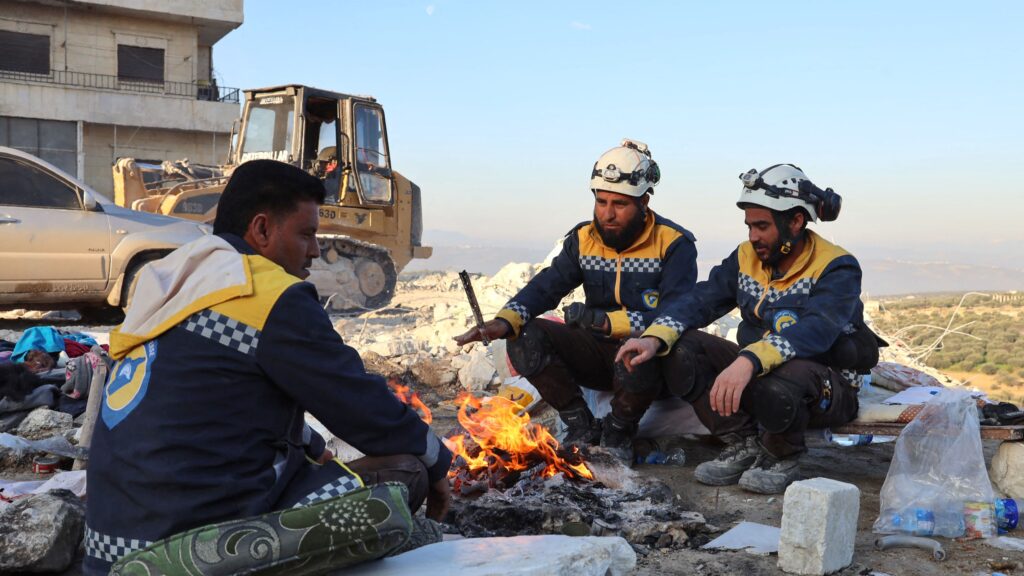
As the White Helmets gained international acclaim, including a 2016 Oscar-winning Netflix documentary and Nobel Peace Prize nominations, they faced a vicious disinformation campaign. From September 2015, when Russia intervened with airstrikes to bolster Assad, Russian state media like RT and Sputnik falsely labeled the White Helmets as al-Qaida-linked terrorists. Assad himself called them “jihadists” in a 2017 AFP interview, despite their neutrality and rescues of all civilians, regardless of affiliation. This propaganda, amplified by online trolls, aimed to discredit their footage, which documented war crimes like the April 2017 Khan Sheikhoun chemical attack that killed 83, including 28 children. UN investigators confirmed the regime’s responsibility, but Russian media called it “staged.” The White Helmets’ evidence, shared with Amnesty and the Syria Justice and Accountability Center, threatened the regime’s narrative, making them targets.
Rescue Amid Rubble and Risk
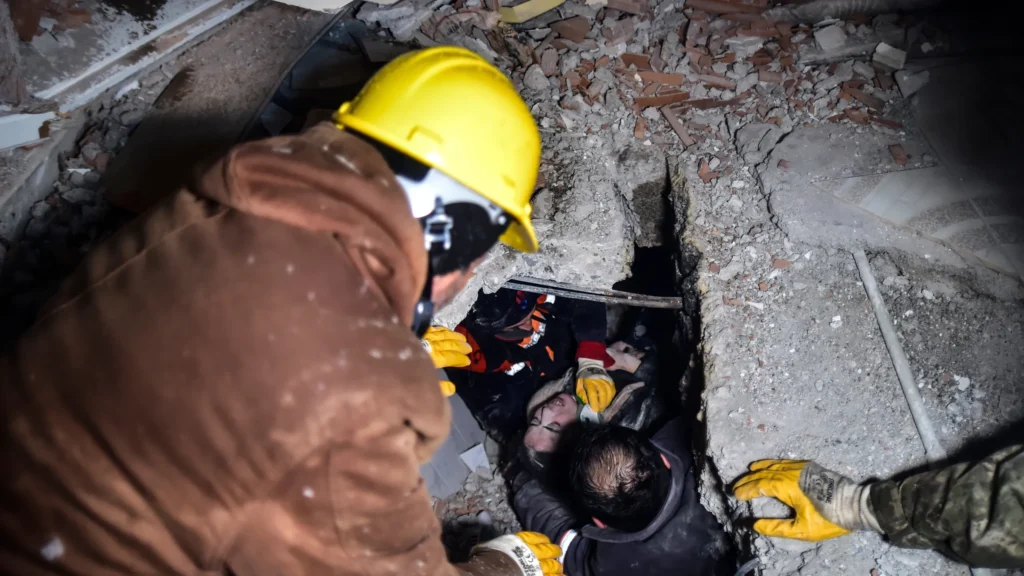
In Idlib, on November 25, 2023, White Helmets teams responded to a regime attack on civilians harvesting olives in Qoqfin village. They pulled survivors from debris and retrieved bodies, working under the threat of further strikes. Earlier, on February 6, 2023, a 7.8-magnitude earthquake struck northwest Syria, compounding the war’s devastation. The White Helmets, already seasoned by a decade of rescue, cleared rubble and saved families, like Alaa’s, whose cries of “I want Baba” echoed as volunteers freed her. Raed al-Saleh accused the UN of failing to aid quake victims, highlighting the group’s isolation. By May 22, 2025, volunteers Maamoun Al-Omar, Shaaban Shoshan, and Jalal Taqo died in Hama while defusing unexploded ordnance, underscoring the ongoing danger even after Assad’s fall in December 2024.
A New Mission After Assad’s Fall
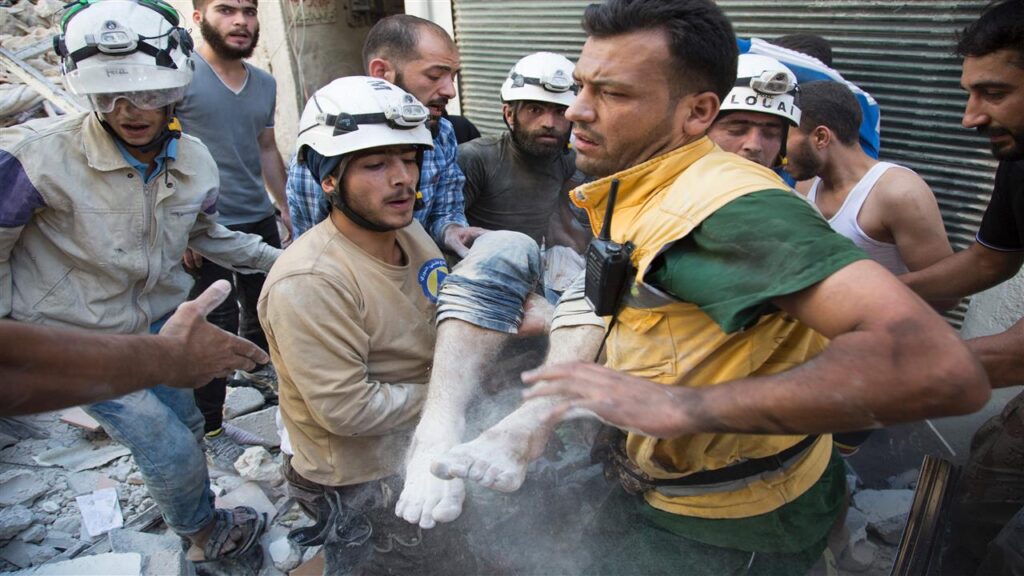
The conflict’s tide turned on December 8, 2024, when a rebel offensive ousted Assad. The White Helmets rolled into Damascus, welcomed as heroes by opposition supporters. Raed al-Saleh was appointed minister of emergencies and disaster management in the interim government, and the group expanded to serve all of Syria’s 20 million people, up from 5 million in rebel areas. On March 30, 2025, in Damascus, they extinguished a fire on Mohamed Bassem Said’s rooftop, proving their new reach. But challenges persisted. In March 2025, sectarian violence in Latakia and Tartous saw 1,400 civilian deaths, mostly Alawites. The White Helmets, led by Abdulkafi Kayal, retrieved bodies in Barmada village, emphasizing their impartiality: “We don’t ask about religion or politics.” Their workload surged to 15,000 missions monthly, addressing war’s legacy—mass graves, unexploded munitions, and damaged infrastructure—despite budget cuts from USAID under the Trump administration.
Legacy of Resilience
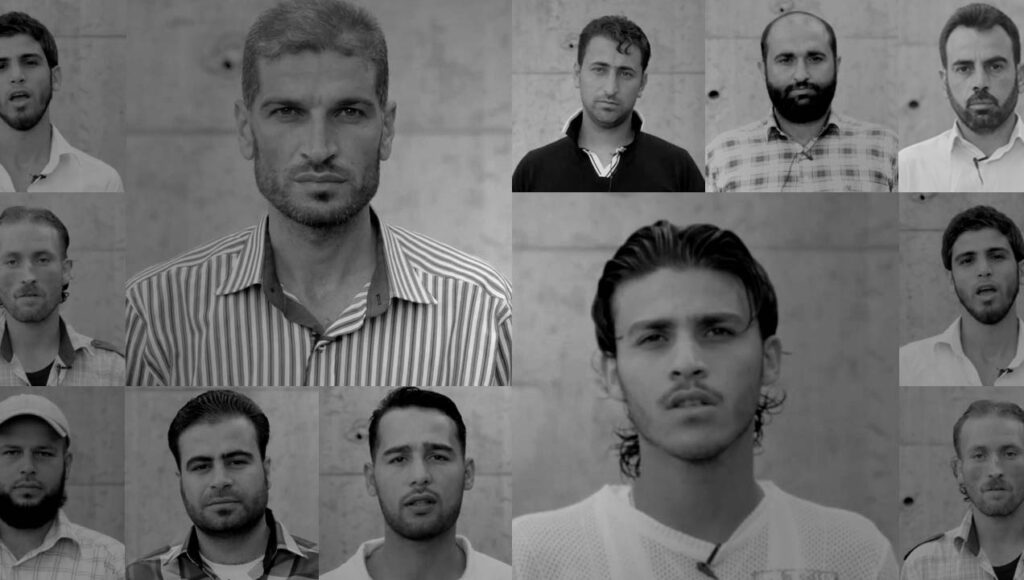
By 2025, the White Helmets had saved over 128,000 lives, their courage immortalized in iconic images: a dust-covered boy in an ambulance, a baby lifted from ruins. Despite losing 308 volunteers, they remained committed, documenting war crimes and rebuilding Syria. Raed al-Saleh, speaking to NPR in 2019, defined their impartiality: “We never asked the 116,000 we saved who they were—Kurd, Christian, or with Assad.” Their story, told in the 2016 documentary and books like The White Helmets by Olivia Snaije, shows ordinary Syrians defying extraordinary odds. In Tartous, as Abdulkafi Kayal told the BBC in 2025, “We are Syrians, and we serve all Syrians.” The White Helmets’ resolve ensured that even in war’s darkest moments, humanity endured.
Sources:
- Wikipedia, “White Helmets (Syrian Civil War),” 2022.
- The Guardian, “How Syria’s White Helmets Became Victims of an Online Propaganda Machine,” 2017.
- NPR, “With Assad Gone, White Helmets Have a New Mission,” 2025.
- The New Yorker, “White Helmets Rescued by Israel,” 2018.
- The Guardian, “Disinformation Wars and James Le Mesurier,” 2020.
- NPR, “Volunteer Who Rescued ‘Miracle Baby’ Killed,” 2016.
- BBC, “White Helmets Step In After Deadly Attacks,” 2025.
- White Helmets official website, “Our History.”
- Syria Civil Defence X posts, 2023–2025
- The White Helmets (2016)
